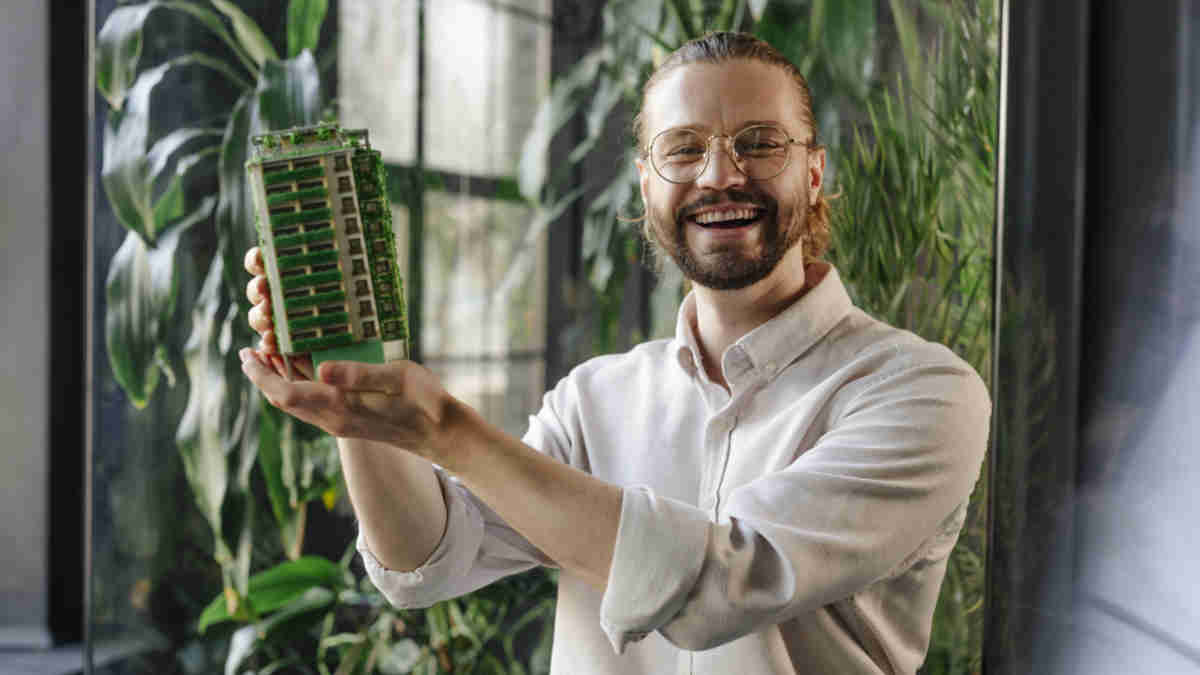ASX stocks keeping it green as the sustainable materials revolution builds

There’s urgent need for sustainable materials as carbon emissions rise. Picture via Getty Images
- There’s urgent need for sustainable materials as carbon emissions rise
- Several ASX companies are innovating with eco-friendly solutions
- This selection of five standouts covers packaging, building and renewables sub-sectors
As we face a rapidly escalating ecological crisis, experts believe green energy alone won’t be enough to solve climate change.
Although the energy sector pumps out about 55% of greenhouse gas emissions, materials used in everyday products account for the other 45%. So to hit that net-zero target, it’s essential to address the challenges associated with material sourcing and production.
Shifting toward sustainable materials won’t be easy. Global resource use has tripled since 1970, yet we’ve had little improvement in the efficiency with which we utilise our materials. This is troubling, especially with dwindling natural resources and a polluted planet.
Amidst this backdrop, a revolution in sustainable materials is taking place.
Researchers around the world are developing innovative materials that reduce waste and are tapping into a growing market for biodegradable alternatives.
Living in a (sustainable) material world
ASX-listed, compostable-packaging player Secos Group (ASX:SES) is one company that’s strategically positioned to capitalise on these market trends.
Over the past 10 years, Secos has strategically divested away from its traditional plastics manufacturing roots towards biodegradable and compostable products.
The company has now positioned itself as a leader in sustainable packaging solutions, with its MyEco products available in 2,400 major Australian stores like Coles and Woolworths.
In Australia, Secos is also the number one provider of compostable bin liners and bags to councils as the company aims to become a 100% sustainable business.
Secos produces its biodegradable products by focusing on compostable resins derived primarily from non-GMO corn starch, which is processed into polymers and blended with other compostable materials like PBAT (a type of biodegradable plastic). This blend allows for effective performance while ensuring natural biodegradability.
The company also has manufacturing plants located in Malaysia and China that convert waste material into high-quality resins. It has also established a significant global sales and distribution footprint and supplies in over 25 countries.
Looking ahead, Secos aims to solidify its position as a leader in sustainable solutions by expanding its global market share, particularly with its MyEco brand, by making inroads in the USA and Latin America through new partnerships.
Papyrus Australia (ASX:PPY) is another company focusing on the production of sustainable packaging.
PPY cultivates the papyrus plant primarily to produce papyrus paper sustainable packaging solutions, which are eco-friendly and biodegradable. Papyrus also utilises banana leaves as part of its sustainable production process.
In August, the company registered a provisional patent for a new technology that produces mouldable cellulosic pulp. This technology allows the company to create sustainable packaging suitable for food contact.
The patent is an important step for Papyrus, helping it expand its product range and enter new markets.
“By expanding into food contact grade packaging, we are not only broadening our market reach but also reinforcing our commitment to sustainability and environmental stewardship,” said Chairman, Al Jawhari.
Building a green future
The sustainable materials revolution isn’t just about making eco-friendly packaging; it extends to the building sector, which plays a significant role in greenhouse gas (GHG) emissions.
In fact, the construction and operation of buildings contribute about 39% of global GHG emissions, according to the Global Alliance for Buildings and Construction.
This is where ASX-listed Zeotech (ASX:ZEO) steps in.
Zeotech is aiming to be Australia’s first large-scale metakaolin producer, a game-changer in the concrete industry. Metakaolin is derived from kaolin, a type of clay, and is processed to enhance its properties for use as a Supplementary Cementitious Material (SCM).
This means that instead of relying solely on traditional cement, builders can incorporate metakaolin into their mixes, which offers several environmental benefits.
When metakaolin is used in concrete, it acts as a partial replacement for cement. This is crucial because cement production is one of the largest sources of carbon dioxide emissions globally.
By substituting some of that cement with metakaolin, we can significantly lower the carbon footprint of construction projects.
Metakaolin also improves the strength and durability of the material. This means structures can last longer and require less maintenance.
With the Australian government pushing for more sustainable building practices, Zeotech is well-positioned to make a significant impact in this space.
Under the leadership of new CEO, James Marsh, Zeotech says it aims to scale up activities at its Toondoon metakaolin project in Queensland, with the goal of becoming Australia’s first large-scale producer of high reactivity metakaolin.
Calix (ASX:CXL) has a special patented technology that heats raw materials in a unique way, making it easier to process minerals and capture emissions from industries.
For green buildings, Calix focuses on making cement and lime production more sustainable.
The company’s Leilac (Low Emissions Intensity Lime and Cement) technology is designed to significantly reduce carbon emissions in lime and cement production. It captures CO2 directly during the production process using a unique method that allows CO2 to be captured as it is released.
By capturing CO2 in real time, Leilac can reduce emissions by up to 90% compared to traditional methods.
One of its key advantages of Leilac is that it can be integrated into existing cement and lime plants, allowing cement manufacturers to improve sustainability of their products without needing to build new facilities.
Worth the waste
Environmental Clean Technologies (ASX:ECT) is also at the forefront of the sustainable revolution.
ECT focuses on turning waste materials into valuable resources, aiming to create a system where we use and reuse materials.
One of its key technologies is the Coldry Process, which transforms low-grade lignite coal into a cleaner, more efficient form of energy.
This technology uses a unique method that involves drying the lignite at low temperatures, which reduces its moisture content. The result is a solid product known as Coldry, which has a higher energy density than the original lignite.
By making coal cleaner and more efficient, this process helps reduce harmful emissions when the coal is burned, contributing to lower greenhouse gas output.
ECT says its Coldry Commercialisation Project is progressing well, with key milestones achieved, including a partnership with ESG Agriculture to produce lignite-nitrogen fertiliser. Looking ahead, ECT aims to complete necessary permits and finalise a joint venture agreement by the third quarter of 2024, with commercial production expected to begin in early 2026.
In addition to Coldry, ECT also develops solutions for treating industrial waste through its ECO-Carbon technology.
This process involves converting waste materials into reusable carbon products. These products are then used as soil amendments, helping to improve soil quality and fertility. By returning carbon back to the soil, this technology supports sustainable agriculture and promotes healthier crop growth.
This article does not constitute financial product advice. You should consider obtaining independent advice before making any financial decisions.
At Stockhead we tell it like it is. While Secos, Zeotech, and Environmental Clean Technologies are Stockhead advertisers, they did not sponsor this article.
Related Topics
UNLOCK INSIGHTS
Discover the untold stories of emerging ASX stocks.
Daily news and expert analysis, it's free to subscribe.
By proceeding, you confirm you understand that we handle personal information in accordance with our Privacy Policy.








